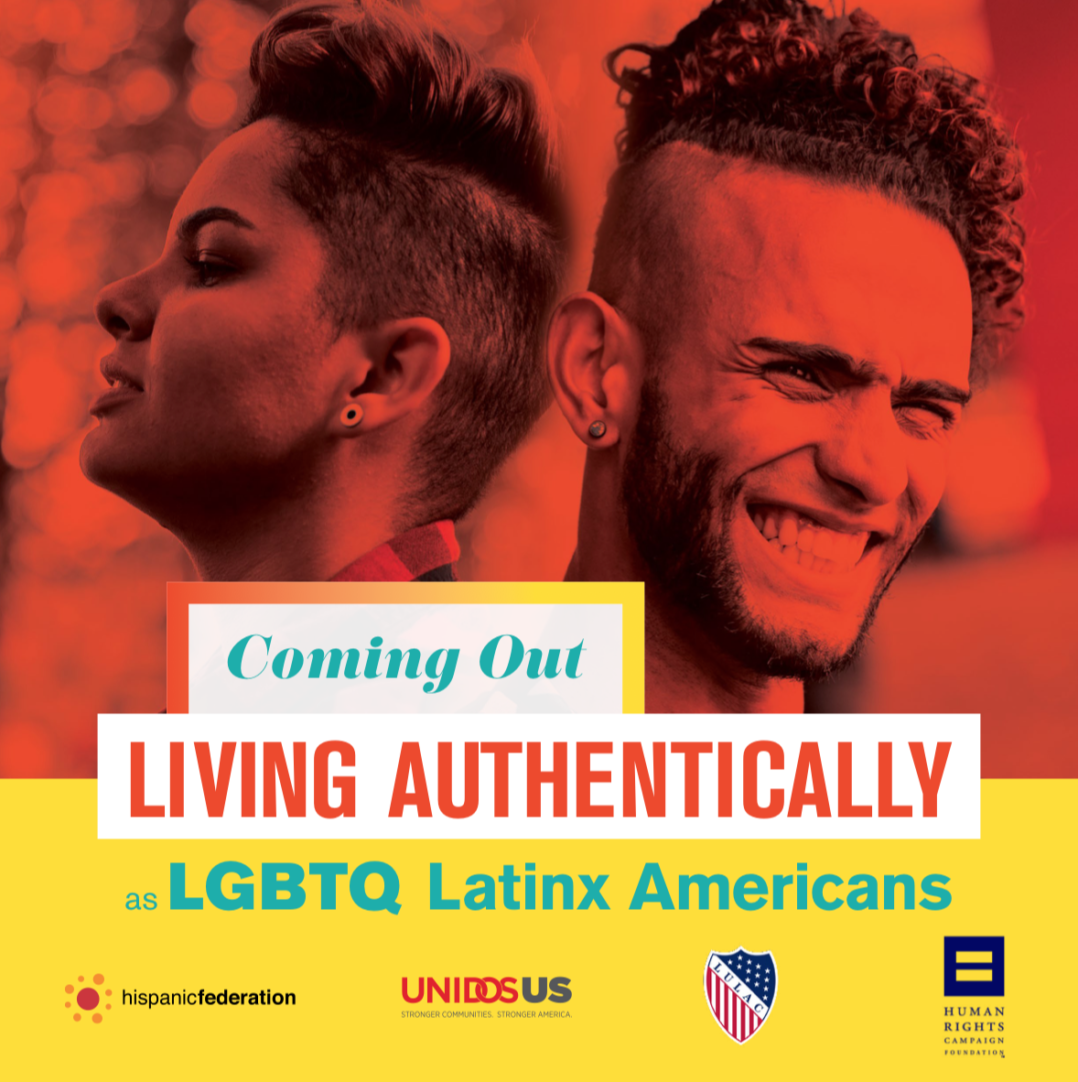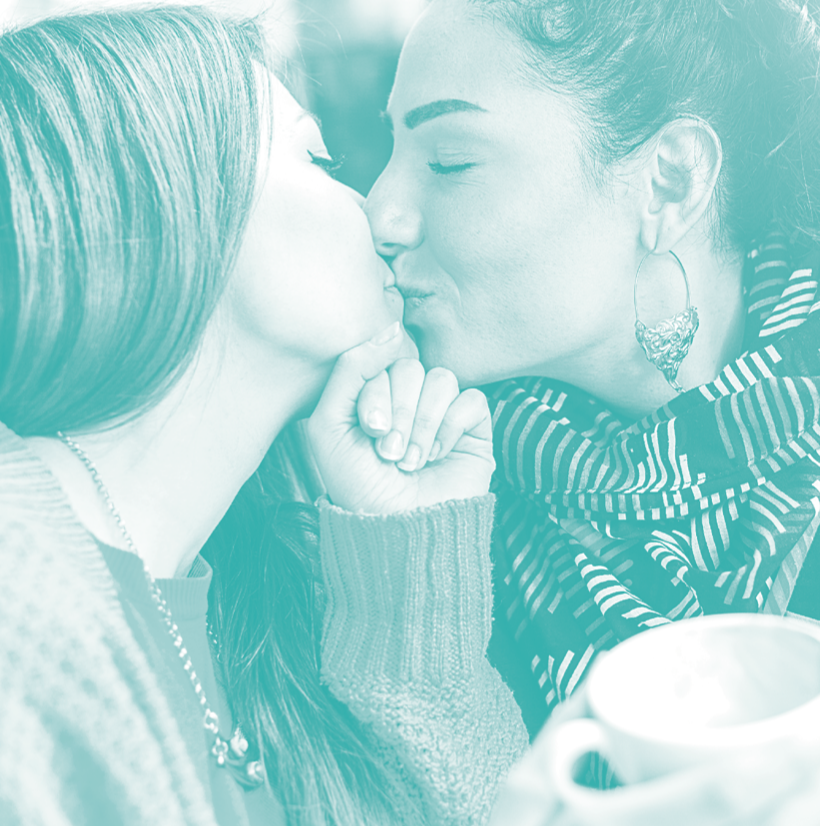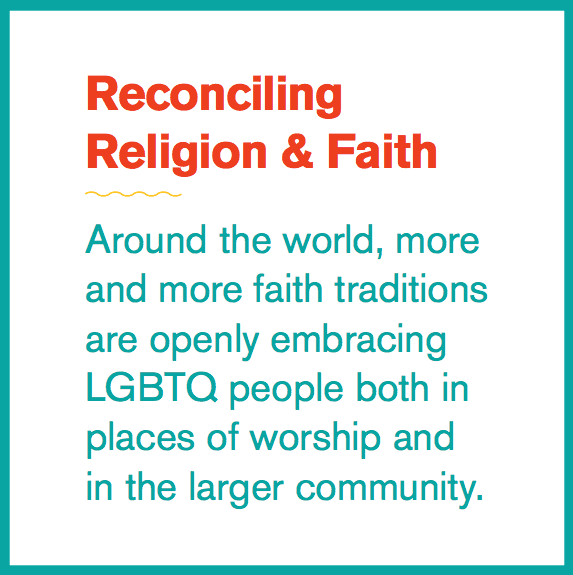Coming Out: A Report Sheds Light on the Diversity and Challenges of the LGBTQ Latinx Experience

By Stephanie Presch, Content Specialist, UnidosUS
Coming out. Salir del closet. It’s a small phrase that represents a huge change.
There are more proud LGBTQ Latinx icons and changemakers raising their voices than ever before—from pop star Ricky Martin and actress Michelle Rodriguez to Texas lawmaker Mary Edna Gonzalez and federal judge Nitza Quinones Alejandro. But a Human Rights Campaign’s 2018 Latinx LGBTQ Youth Report shows that the process is still difficult for Latinx youth, who face unique challenges.
Keep up with the latest from UnidosUS
Sign up for the weekly UnidosUS Action Network newsletter delivered every Thursday.
Coming out is a personal choice, and it’s always important to assess whether one’s circumstances will provide a safe and supportive environment to do so. There’s no singular LGBTQ coming out story or singular Latinx experience, but this research identifies common challenges and suggests culturally based approaches to support LGBTQ youth.
As the Trump administration takes a punitive stance on immigration, stokes fear about the undocumented, and has attempted to roll back protections for gender orientationand loosen laws protecting people from sexual harassment and assault, Latinx LGBTQ students are especially vulnerable right now.
There are also an estimated 190,000 undocumented LGBTQ Latinx immigrants living in the United States. Among them are an estimated 75,000 LGBTQ DREAMers, 36,000 of whom have participated in the Deferred Action for Childhood Arrivals (DACA) program. Deportation—even for DACA recipients, who have faced hostility from the Trump administration as they’ve sought to end the program—is a very real and ever-present danger. At the same time, LGBTQ people—especially people of color—face higher rates of sexual assault than heterosexual people, especially ones who are White.

To respond to this need, UnidosUS partnered with the HRC Foundation and others on Coming Out: Living Authentically as LGBTQ Latinx Americans, the first of a series of publications addressing the LGBTQ experience from a Latinx perspective. This report explores the unique needs and experiences of Latinx people, in addition to providing guidance to help families support their LGBTQ loved ones. It also includes resources for people who face harassment or fear for their safety because of their sexual orientation or gender identity.
“Our UnidosUS familia and affiliates have seen the devastating effects of this administration on LGBTQ and Latinx youth. We’ve also seen the resilience and progress possible when we work together to make our communities safe and inclusive. These reports are critical resources that will help practitioners better serve all youth,” says María Moser, UnidosUS’s Senior Director of Teaching and Learning.
LIVING IN A BILINGUAL AND BICULTURAL FAMILY
There are several common challenges people who are both Latinx and LGBTQ face. For starters, one in three Latinx people in the United States is foreign-born, and some of the terms used to express sexual or gender identity in Spanish either don’t exist or may have negative connotations. For example, words like queer or genderqueer have no Spanish translations, and this language barrier can make it difficult for people to express their feelings to their loved ones.
Additionally, many Latinx people live in bicultural families, with traditional Latino cultural values alongside values reflected in dominant U.S. cultural discourse. Some values, such as the strict gender roles described as machismo, may create conflict or misunderstanding in the family. Others, like familismo—which emphasizes the connections of family above all—can help ease the coming out experience. Familismo priotizes support and unity, in contrast to estrangement or ostracizing a family member who comes out. The report highlights coming out stories in which the significance of family ties persuaded someone to be an ally.
The book also notes a deep tradition of LGBTQ inclusion within Latin America’s indigenous cultures. For example, same-sex couples are well-documented throughout Mayan civilization. Additionally, the Zapote people in Mexico have a long-recognized muxe—people who were assigned male at birth and later identify as women or non-binary.
LATINX, LGBTQ AND IMMIGRANT
These challenges are further compounded for undocumented immigrants. In fact, some people refer to themselves as “undocuqueer” to describe the intersectional challenges they face.
Many LGBTQ immigrants come from countries where they may be harassed, beaten, or killed because of their identity. In fact some come from countries where discrimination is government sanctioned. If they are undocumented, they may have to deal with the threat of deportation to a country where openly expressing their gender or sexual identity can be dangerous, or evenly deadly.
Latinx immigrants should know that coming out as LGBTQ should not affect their chances of being deported or having their visa revoked. In fact, they may be able to claim asylum for the very reasons mentioned above, but it is always best to consult an attorney to determine asylum eligibility.
RELIGION AS A PART OF LIFE
Religion is also a very important part of life for many Latinx people. Seventy percent identify as religious, and 57% identify as Catholic.
Religious groups differ in how they react to their LGBTQ brothers and sisters. If your faith plays an important part in your life, it might be helpful to seek out houses of worship or faith-based organizations that openly accept and embrace your identity.
It is important to remember that even though an LGBTQ person may be able to reconcile their faith with their LGBTQ identity, their friends and family members may have more difficulty with this because of the traditions they’ve embraced.
In this case, there are a few things that you should consider doing before you come out. The first is to identify members in your existing religious community that could be effective allies once you come out. You can also read stories of LGBTQ Latinx people of faith who have undergone their own journeys; explore LGBTQ-affirming places of worship; and seek support from LGBTQ Latinx religious organizations.
Human Rights Campaign has resources that may be helpful to get you started, such as A La Familia, a bilingual project that centers on faith and the LGBTQ identity.
EVERYONE DESERVES RESPECT

Coming out at school and at work can also be helpful as you try to live your life as your most authentic self. However, it’s also important to know beforehand about non-discrimination policies and local laws, whether your employer offers LGBTQ-friendly benefits, and if your school campus has access to organizations like a Queer-Straight Alliance, a community-based outreach program found in some American middle schools, high schools, and college campuses which aims to make school environments feel safe and welcoming to LGBTQ students.
This summer, UnidosUS will release its own LGBTQ Inclusion Toolkit for its Líderes Initiative, a K-16 leadership program aimed at improving educational and personal opportunities and outcomes for Latinx youth. The Progress Report will continue to post updates as resources like these become available.



